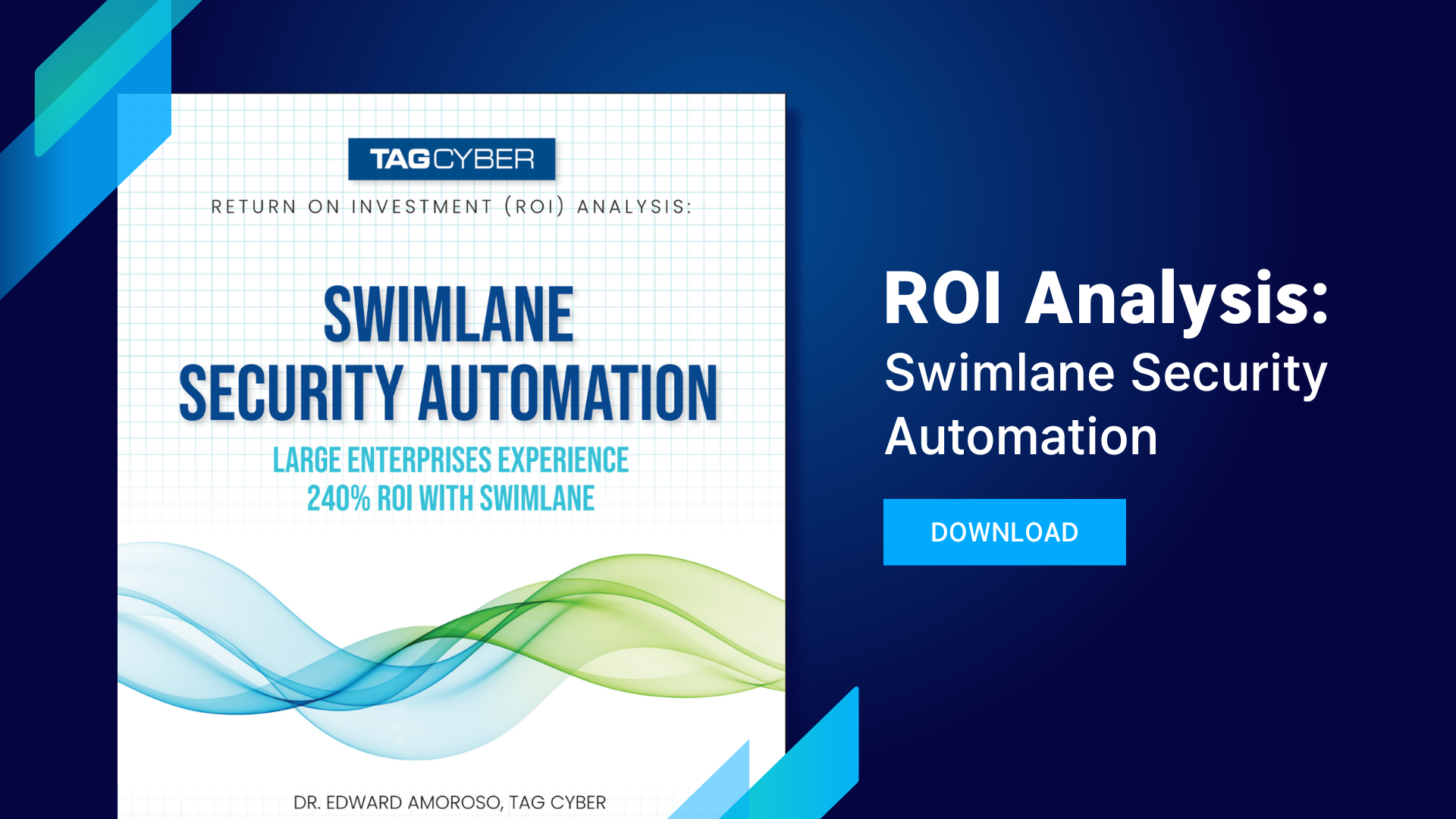Everything you need to know about the ROI of security automation.
According to Security Magazine, 70% of security operations center (SOC) teams are drowning in alert noise and the pressure to make near-real-time decisions about critical threats. During a cyber attack, time is of the essence and analysts must react as fast as possible – something that’s easier said than done.
With the average cost of a data breach near $4.35 million, security teams continue to seek out ways to improve incident response. Naturally, security leaders have started to turn to automation software like security orchestration, automation and response (SOAR) solutions. But it can be difficult to identify if a cybersecurity strategy actually improves security operations. In addition to the usual risks of implementing new technology, there are many other aspects to take into consideration, such as costs and benefits.
Forecasting the return on investment (ROI) is an excellent way to quantify the value of the new tool and make sure it aligns with business goals, as well as gain the long-term support of board members. At the same time, automating security operations is undeniably the way to improve SOC teams’ day-to-day work, as well as ensure business health and safety.
But what does the ROI of security automation look like? In this article, you’ll learn:
What is ROI in Security?
ROI is the return you’ll see on security investments, such as hiring more staff, outsourcing or adopting new security technology. Calculating ROI in security can be challenging and different than in other industries. To properly understand the methodology, keep in mind that security tools are a cost center and not a revenue generator.
Deploying a security tool requires an investment upfront along with recurring expenses. But it will also generate cost savings in several areas of security operations: headcount demand, tool prices, response values and more. Some aspects such as analyst work satisfaction, loss of brand reputation and business disruption after a breach can’t be perfectly quantified, but are also added value.
Calculating the ROI of security enables you to quantify the value of your new security tool. By comparing it to the cost of data breaches, it is possible to determine if it is worth the investment and the cost savings.
Why is it Important to Calculate the ROI of a SOAR Solution?
One of the most popular benefits of SOAR platforms is the cost savings from automating repetitive, mundane tasks at machine speeds. However, SOAR solutions come in a variety of shapes, sizes and capabilities. It’s important to understand the ROI you may experience with low-code SOAR versus a legacy, full-code solution (or even a no-code platform).
Enterprise security teams already have dozens of cybersecurity tools in place. CISOs wonder why they should invest in yet another one. How is this new solution a great addition to their current technology stack, and how is it going to solve their current challenges without breaking the bank? Calculating the ROI of the specific solution highlights exactly what your team can expect from adopting the product.
What is the ROI of Security Automation?
The ROI of security automation is monetizing the ability to reduce the number of successful cyberattacks through processes and fast response time. One way to calculate the ROI of security automation is to follow an equation-based approach where the investment and the quantified returns are normalized into a common financial basis. The ROI leverages the average cost of incidents and the number of incidents that might be faced over a certain period of time.
The average cost of incidents without automation can be estimated this way: the number of incidents, the time it takes to resolve an incident, the number of staff impacted and their associated cost. When automation comes into the equation, the time to resolve an incident is reduced by 70 to 95%, improving staff efficiency. This number can be compared to the price of the equipment to determine its ROI.
What are the Financial Benefits of Security Automation?
Enterprise SOC teams that use a security automation platform can determine cost reduction and benefits in four key areas. Not all solutions are equal and will offer different cost savings in all these areas. That’s it’s important to identify what impact your solution has for each area.
- Staff Salary Savings – Reduce the need for additional new team members that support security functions.
- Staff Support Savings – Reduce support costs associated with larger security teams such as training, tools and other services.
- Tool Savings – Reduce the number of supports tool needed to address security alerts.
- Response Cost Savings – Reduce incident response costs that occur by lowering the likelihood of incidents and response time.
How does Security Automation Benefit SOC Teams?
As mentioned earlier, it is nearly impossible to put a dollar amount in front of every savings security automation platform brings your team. One sure thing is that security automation is improving the lives of SOC analysts.
Some of the top qualifiable benefits for security teams are:
- Mitigate analyst alert fatigue and burnout
- Simplify security processes
- Regain time for more strategic work
- Improve overall job satisfaction
How Long Will it Take to See the Benefits of Security Automation?
The benefits of security automation are visible almost immediately. Once it is up and running, the daily life of your staff will dramatically increase. They will be able to focus on more strategic tasks, instead of detection identification. For instance, Swimlane customer ProCircular saw “close to a 60% efficiency increase” in their team within the initial 45-day proof of value time.
Additionally, after the first incident, the analysts will be able to identify how much time they saved in response time compared to previously.
Related Reading: Learn How ProCircular Unlocks Power and Flexibility with Swimlane.
Real-Life Examples of Security Automation Cost Savings
One Fortune 100 Swimlane customer saves $160,000 a month by automating 3,700 hours of work. improving the efficiency of security allows them to save on operational costs, as well as improve their staff’s daily work satisfaction. This reduces staff burnout and improves retention.
Another Fortune 100 financial services customer saves roughly $900,000 a year by using Swimlane to automate security use cases in and beyond the SOC. They are able to measure and share the value of their security programs with business stakeholders with in-platform customizable reports.

Calculate your ROI with Swimlane Turbine
To help companies evaluate the potential financial impact of the potential investment, TAG Cyber conducted an extensive study on the Swimlane Security Automation Solution.
Table of Contents
- WHAT IS ‘ROI’ IN SECURITY?
- WHY IS IT IMPORTANT TO CALCULATE ROI?
- WHAT IS THE ROI OF SECURITY AUTOMATION?
- WHAT ARE THE FINANCIAL BENEFITS OF SECURITY AUTOMATION?
- HOW DOES SECURITY AUTOMATION BENEFIT SOC TEAMS?
- HOW LONG WILL IT TAKE TO SEE THE BENEFITS OF SECURITY AUTOMATION?
- EXAMPLES OF SECURITY AUTOMATION COST SAVINGS


